
The professional outdoor cannabis grower often goes through a checklist before their outdoor crop starts bloom. Some of this is common sense, but some of the checks & procedures are useful to outdoor growers of all types, including small outdoor home growers.
What outdoor cannabis growers should watch for in late spring
In late spring/early summer most outdoor growers have got their plants through the nervy seedling stages. The plants are usually well established, though not necessarily yet in bloom.
If you grow feminized seeds they often start to bloom when daily outdoor light hours dip below 14-14.5 hours per day. If growing autoflower seeds they start to bloom around a month after germination - irrespective of the light cycle. Around this time is a good point to check your plants and assess them before bloom begins.
1. Check for plant sex
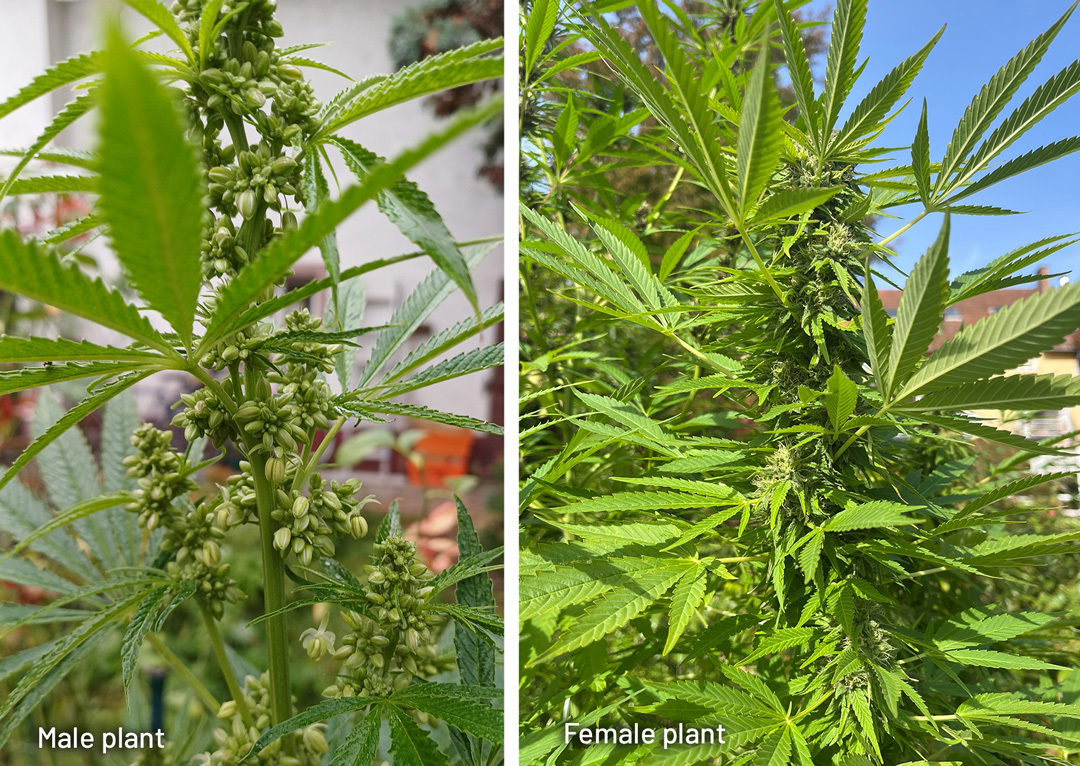

Unless you’re deliberately trying to produce your own weed seeds now is a great time to check plants as they show their sex. Males can be destroyed. The space they leave will be welcome extra space for your remaining plants. Although some outdoor growers use regular seeds, most grow from photoperiod feminized seeds or autoflower seeds.
☀️ Pro Tip: Although infrequent for outdoor growers, hermie plants should also be checked for, and removed if found.
2. Inspect for pests, disease and mold
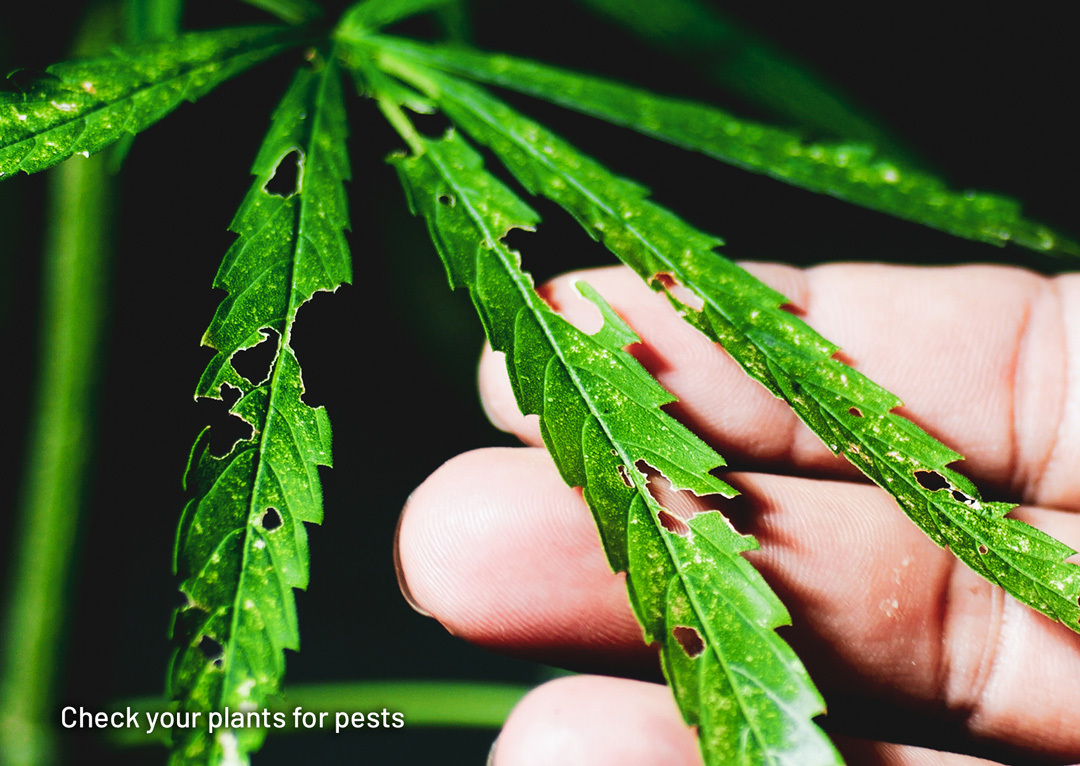

Mold is rarely an issue for plants about to start bloom. But pests and disease can be a real headache for some. When growing outdoors pests can become established and need rapid attention. Many outdoor growers routinely buy and release beneficial garden insects of various types. Ladybugs are great at dealing with greenfly/aphid infestations. Plenty of other beneficial predator insects are available according to the needs in your country/latitude. They can be bought easily online or increasingly from many garden centers.
☀️ Pro Tip: Those growing in a greenhouse or polytunnel (without natural predators) may find pest outbreaks can escalate quickly. Introducing beneficial predator insects as quickly as possible is a great approach.
3. Evaluate nutrient intake and needs
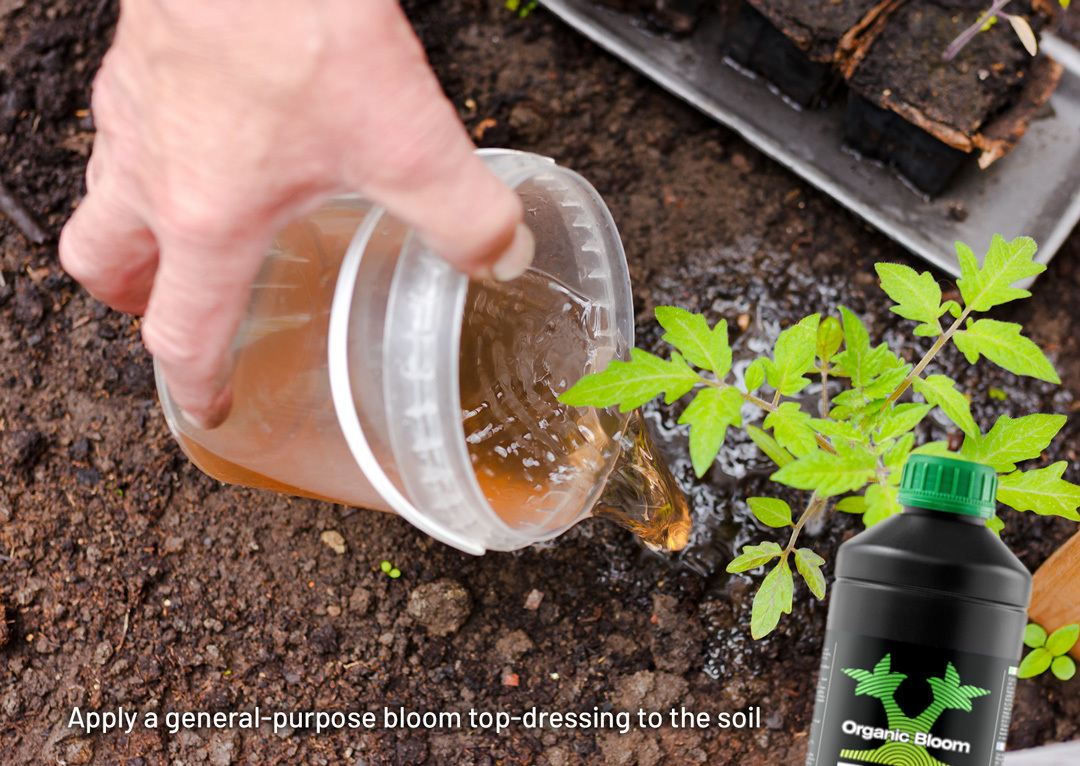

Your outdoor weed plants have hopefully grown well for the first weeks/months of veg growth. As they continue to grow their root mass will grow and take up more water, nutrition & minerals. You may wish to apply a general-purpose bloom top-dressing to the soil. This could be fed via a watering can if using liquid nutrients. Or you could scatter some pelletized nutrients on the topsoil. These will slowly decompose releasing valuable nutrients into the ground. Various options are available - blood/fish/bone meal, chicken poop pellets, bat guano, seaweed etc.
☀️ Pro Tips:
• Slow release organic nutrients dug into the soil before the grow starts (BioTabs are fully proven and recommended) ensure plenty of minerals/nutrition as your plants grow.
• Switch from Nitrogen-rich veg nutrients to bloom nutrients (richer in Phosphorus and Potassium with relatively less Nitrogen) as bloom approaches.
• Those growing in very dry/desert conditions may wish to add plenty of water absorbing crystals (similar to the absorbent material in baby diapers) to the soil. These can absorb significant amounts of water at root level.
• Good plant health is often the result of efforts made the previous season, digging in plenty of well-rotted manure, fertilizers, seaweed, soil-improvers etc. Soil health is vital, look after your grow locations and they will serve you for many years!
4. Consider training adjustments
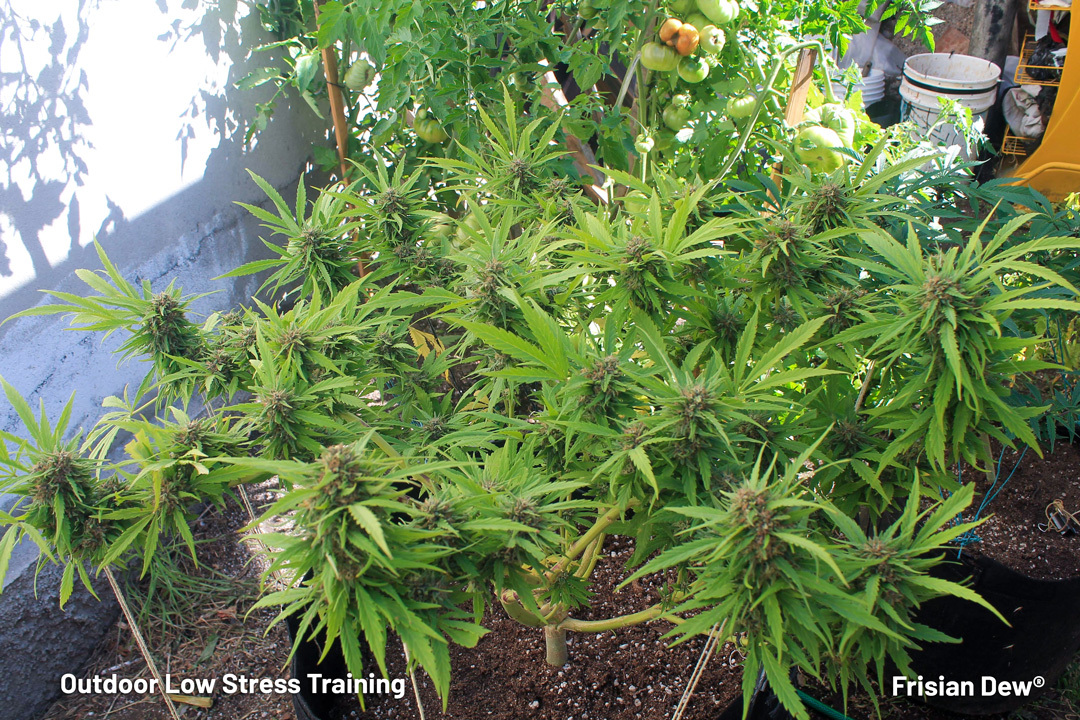

If you are worried that your plant could be getting too tall, now is the time to consider your options.
• Some use an outdoor SCROG screen
• You could consider the cannabis topping technique
• Some growers use cannabis low stress training (LST) to help control plants that are getting out of control. The grower ties the branches down with garden cord. Sometimes this is made easier if the stem/branch is weakened by crushing between thumb & finger. A process known as super cropping.
Related:
Outdoor SCROG with Dutch Passion Desfrán, 900g/32oz harvest!
☀️ Pro Tip: Outdoor growers need to be extra careful when selecting their strains. Check the outdoor cannabis seed selection from your chosen seedbank. And if necessary, check their website/helpdesk for specific advice about the best strains for your latitude/location.
5. Clean up the lower canopy
Many growers remove lower branches and leaves, feeling this allows the plant to focus growth on the main upper bloom points. Removing lower foliage often improves airflow, which in turn can help reduce chances of mold in later bloom.
☀️ Pro Tip: Keep the soil surface clean. Note that some use a cover-crop/companion planting on the surface to prevent the soil drying out. Legumes (which move atmospheric nitrogen into useful soil fertilizers) such as clover, alfalfa are useful. So are Cowpea, Vetch, Basil and many others.
6. Secure your plants
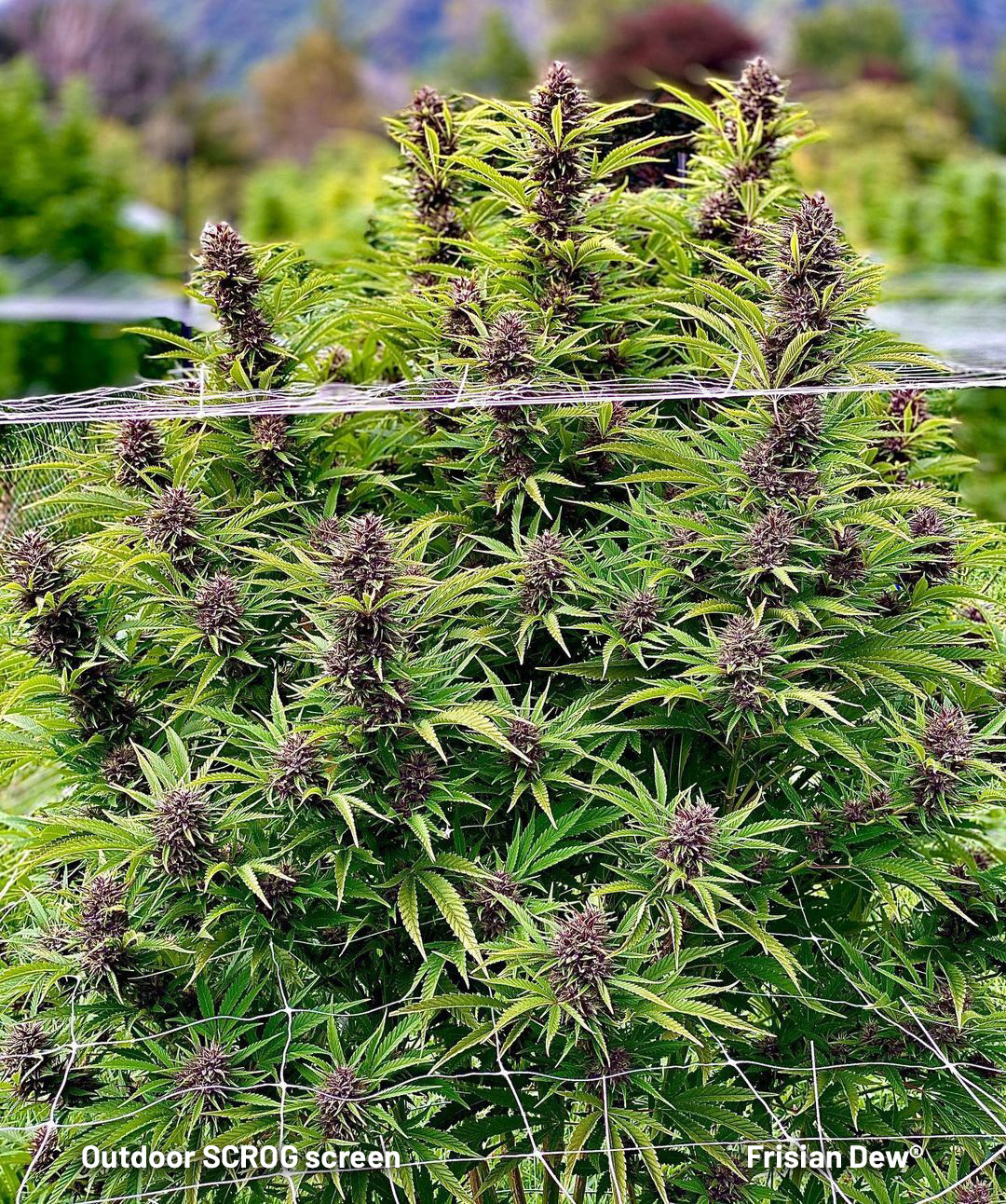

Your plants may have made it through the first month or two of vegetative growth. Soon bloom beckons and with it heavy branches, the threat of pests and the possibility of extreme weather. Some outdoor growers use SCROG-style netting to help support branches which may eventually become too heavy. Guerrilla growers may reinforce an external protective perimeter of thorns/brambles to deter deer, dog-walkers etc. from discovering your patch.
Those anticipating possible bad weather may have equipment, e.g. tarpaulins & wooden stakes on-site in the event of heavy rain or heatwave conditions.
☀️ Pro Tip: A well planned and prepared outdoor grow location will stay productive for many years. Do your best to improve the soil/site quality and watch your harvests steadily improve!
7. Monitor light cycles (for photoperiods)
Grow the same strain for a couple of seasons and you will have an idea of when it will start to bloom. Your seedbank helpdesk should also be able to advise which strains would best suit your particular location, latitude, altitude etc.
Often in the northern hemisphere, feminized seed varieties will start to bloom when days shorten in summer to around 14 - 14.5 hours of daily light (or less). They are usually ready to harvest around 2 - 2.5 months later.
☀️ Pro Tip: Use of autoflower seeds or ‘Fast feminized’ seeds (such as Think Fast) are highly recommended for growers nervous about early/late season weather.
8. Cut down any nearby over-hanging vegetation/branches
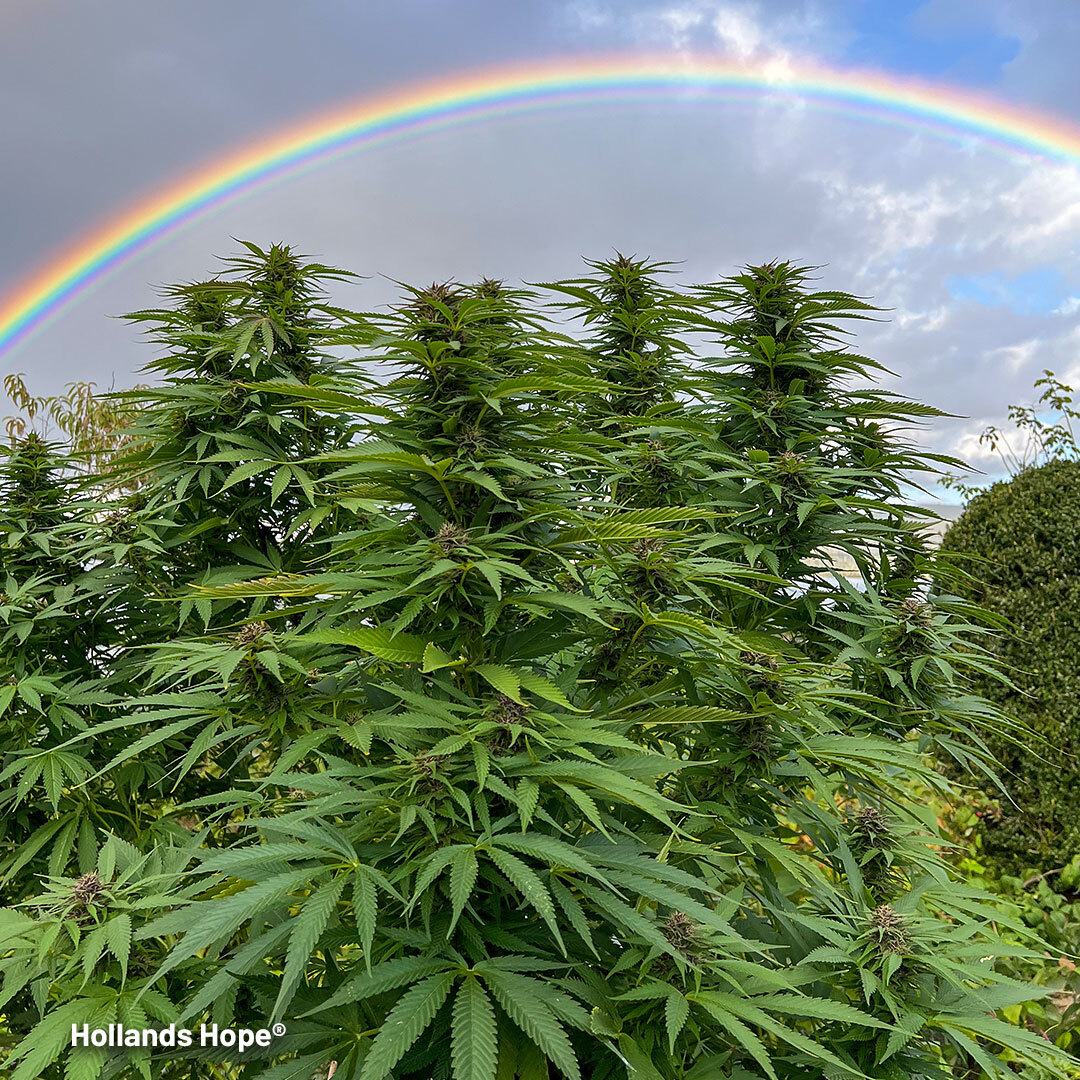

Especially if any tree branches, bushes etc. are blocking sunlight to your plants. Be brutal, your goal is to maximize the sunlight for your cannabis plants. Priorities the grow locations which offer the highest amounts of direct light to your plants. Work hard on these precious locations to maximize soil health, allowing the grow location to give many years of valuable use.
9. Have a back-up plan in case of extreme heat, storms, drought etc.
Now is the time to consider your options (and prepare) if you are hit with weather issues later in bloom.
If growing on your own land you may be able to bring container-grown plants inside a garage/under-cover to get them out of oppressive conditions (hot, cold, wind or rain). If growing directly in the ground, you may be able to protect your plants from extreme heat with a nylon shade-net. These are available in different shade levels. Better to invest in shade nets and any necessary support stakes now, rather than wait until the crisis hits. Likewise, tarpaulins are a great up-front investment, they can be used as a protective cover in extreme storms/rain events.
10. Water management
Outdoor growers are increasingly mindful of ensuring the sometimes-demanding water requirements of their plants. Especially if they grow a 4m/13ft tall monster! It’s good to give some up-front thought to your water management plans before the summer suns wilt your star-plants.
If growing on your own land it may be easy to run a hose to the plants. If growing in the great outdoors you may wish to prioritize those grow locations near an outdoor water supply, e.g. a small stream, lake etc.
11. Document your grow
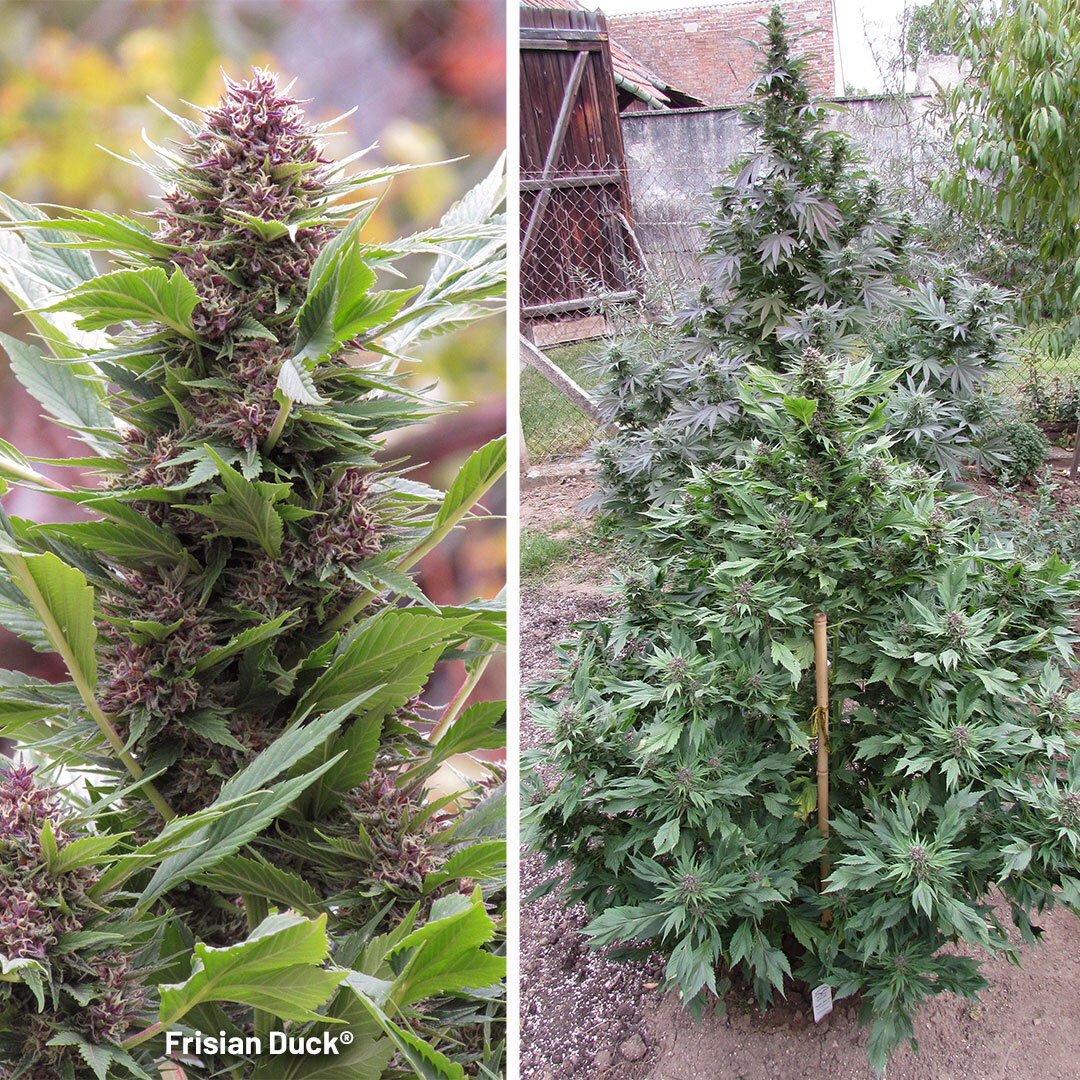

Some of your more important learnings stay in your memory if you make a written note of them. This could be related to e.g. the dates of the last spring frost and the date when fall/autumn weather became simply untenable for growing.
You may also want to record the times when your interventions (e.g. feeding, maintenance etc.) were most useful. Many of the best growers have usefully obsessive habits when it comes to checking and double-checking their plans & preparations.
Final thoughts and key takeaways
Growing weed outdoors is as easy and cheap as it comes. No need to invest in a high-tech indoor grow room, no need to spend cash on electricity for lights, heating & air con. Growing outdoors is the most affordable way to grow your own cannabis. Your only real costs are the cannabis seeds and some nutrients.
Grow autoflower seeds and you could get 2 or even 3 successive outdoor crops each season. Grow photoperiod feminized seeds and you will only get one outdoor cannabis crop, but it could yield several hundred grams (dozens of ounces). Remember, grow the best outdoor cannabis seeds and your harvest quality can match indoor quality.
Your key challenges are to buy the right outdoor seeds for your location and plan/prepare well. Enjoy outdoor growing!

